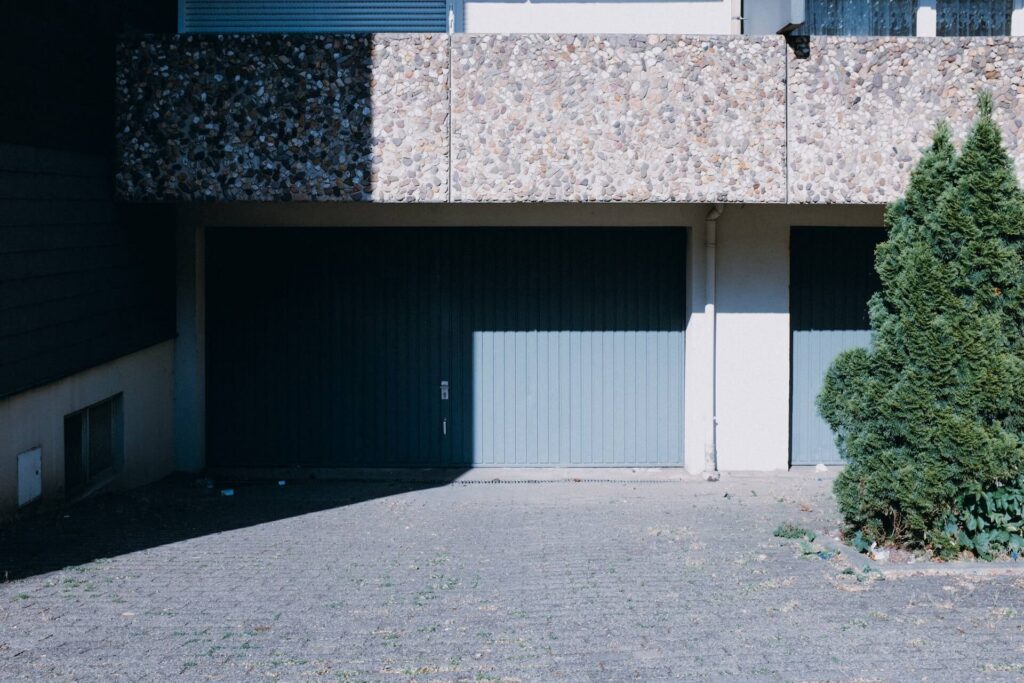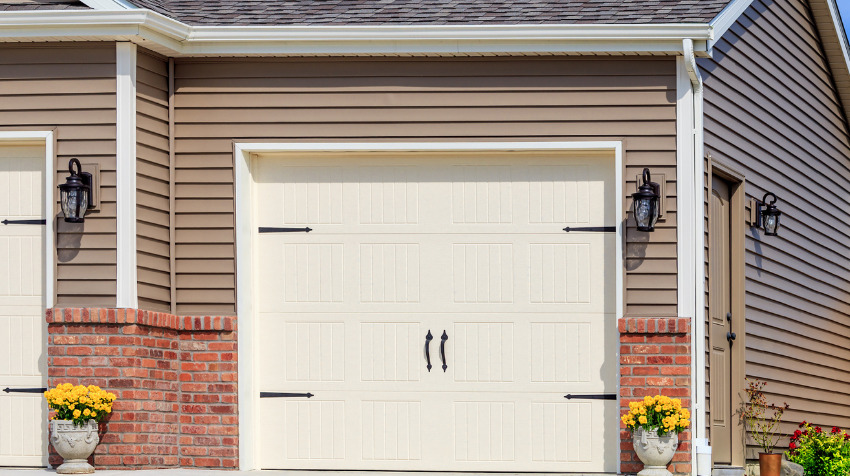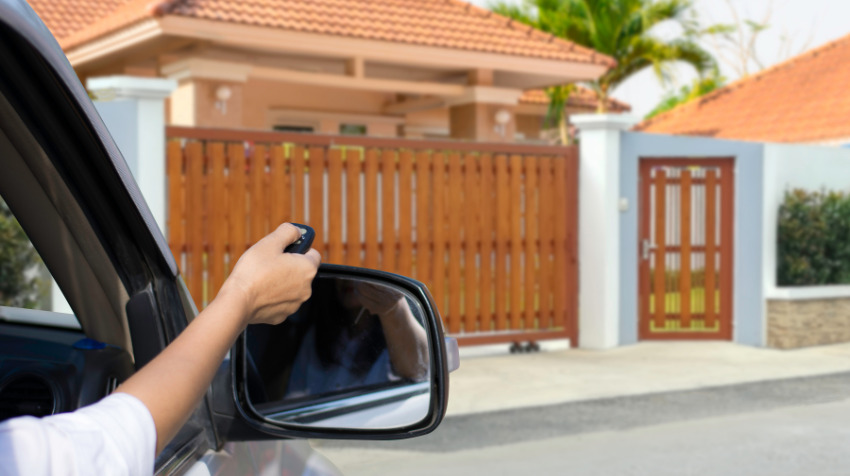Preserving Functionality: Essential Preventative Maintenance Tips for Your Garage Door
If you’re a homeowner, your garage door is likely one of the most frequently used entrances to your home. It’s also one of the largest moving parts in your house and can pose a safety hazard if not properly maintained.
That’s why it’s important to take proactive measures to protect your garage door with preventative maintenance. Regular maintenance not only extends the lifespan of your garage door but also ensures that it operates safely and smoothly.
Neglecting regular upkeep can lead to costly repairs or even worse, serious accidents. By following these preventative maintenance tips, you’ll keep your garage door functioning optimally while providing peace of mind for you and your family.
Lubricate Moving Parts
You’ll want to keep those moving parts lubricated to ensure smooth operation. The best lubricants for garage doors are silicone spray or white lithium grease. Avoid using WD-40 as it can attract dust and dirt, which can cause more problems down the line.
Lubrication frequency depends on how often you use your garage door – if you use it daily, then once every three months should suffice. However, if it’s only used occasionally, then a yearly application will do.
When applying lubricant, make sure to focus on the hinges, rollers, springs and bearings. Use a rag to wipe off any excess oil or grease after application. Keeping these parts well-lubricated will reduce friction and wear and tear on the components of your garage door system.
Now that you’ve got your moving parts all set up with proper lubrication, let’s move onto checking the balance and alignment of your garage door.
Check Balance and Alignment
Make sure your system’s balance and alignment are spot on, as an ounce of prevention is worth a pound of cure. Common issues with garage doors often stem from poor balance and misalignment. Troubleshooting techniques can help you identify these issues early on, which’ll save you from costly repairs down the line.
Here are some DIY balance and alignment fixes to keep your garage door running smoothly:
- Check the cables: Look for frayed or damaged cables that may be causing imbalance.
- Adjust the springs: Tension in the springs can cause alignment problems; make sure they’re properly adjusted.
- Tighten bolts and screws: Loose hardware can throw off the balance of the door.
- Test sensors: Misaligned or faulty sensors can also contribute to balance issues.
Inspecting and replacing weatherstripping is another important step in maintaining your garage door’s longevity.
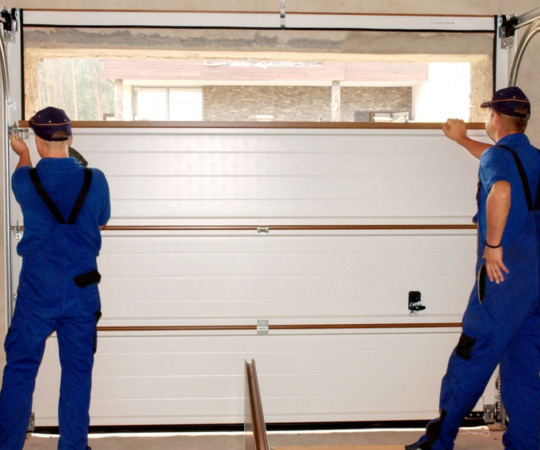
Inspect and Replace Weatherstripping
When it comes to maintaining your garage door, one of the key areas you need to focus on is weatherstripping. This small but important component helps keep out drafts, debris, and even pests from entering your garage space.
To ensure that your door remains in top condition, it’s crucial to know how to inspect and replace weatherstripping as needed. In this discussion, we’ll go over why weatherstripping is important and provide step-by-step instructions for inspecting and replacing it on your own.
Why Weatherstripping is Important
Properly sealing gaps around the entrance to your home can save you money on energy bills and protect your belongings from the elements. Weatherstripping is an essential element of insulation that helps maintain energy efficiency in your home. It creates a tight seal between the garage door and the frame, preventing air leaks and keeping out unwanted moisture, dust, and pests.
Here are three reasons why weatherstripping is important for maintaining your garage door:
1) It improves energy efficiency by reducing heating and cooling costs.
2) It enhances indoor air quality by blocking out pollutants.
3) It extends the life of your garage door by protecting it from harsh weather conditions.
To ensure maximum protection from these elements, it’s essential to inspect and replace weatherstripping regularly. With time, weatherstripping may deteriorate or come loose, leaving gaps that allow air leaks.
In the next section, we’ll discuss how to inspect and replace weatherstripping effectively without compromising its effectiveness.
How to Inspect and Replace Weatherstripping
Let’s check out how to inspect and swap weatherstripping, so you can keep your home snug, energy-efficient, and free from unwanted pests.
To replace weatherstripping, the first thing you need to do is examine it for any signs of wear and tear. Check if there are any cracks or gaps in the material that will let air or water seep through.
Tools needed for inspection include a ladder, flashlight, screwdriver, putty knife, tape measure, and replacement weatherstripping material.
Once you have determined that it’s time to replace the weatherstripping on your garage door, begin by removing the old one with a putty knife or screwdriver. Measure the dimensions of your door frame before purchasing new weatherstripping material.
Make sure that you buy enough length of stripping so that it overlaps slightly at both corners when installed. After cutting to size with scissors or utility knife as necessary, install new stripping by pressing firmly into place along the edges of your garage door frame using an adhesive like double-sided tape or silicone caulk.
With this done properly, now it’s time to test safety features on your garage door opener!
Test Safety Features
Make sure to check that all safety features are working properly before using your garage door. Testing the emergency release is crucial for ensuring that the door can be manually opened in case of a power outage or other emergency. To test this feature, simply pull the cord hanging from the opener to disengage it from the track. Then, try lifting and lowering the door by hand to make sure it moves smoothly.
It’s also important to troubleshoot sensors if your garage door has them. These sensors are designed to detect objects in the path of the closing door and prevent it from causing damage or injury. To test them, place an object such as a broomstick or box in front of one of the sensors while closing the door with your remote control. If everything is working correctly, the door should immediately stop and reverse direction when it senses an obstruction.
Once you’ve tested these safety features, you can move on to cleaning and inspecting your tracks for optimal performance.
Clean and Inspect Tracks
Now that you’ve tested the safety features of your garage door, it’s time to move on to the next step in preventative maintenance: cleaning and inspecting tracks. The tracks are essential to your garage door system as they guide the door up and down smoothly. Over time, dirt, debris, and even small objects can get lodged in the tracks causing obstruction, leading to a malfunctioning door or damage to other parts of the system.
To prevent this, start by cleaning out any debris or buildup using track cleaning techniques, such as using a soft brush or cloth. Next, use track inspection tools like a level or plumb line to ensure that the tracks are still aligned correctly. Bent or misaligned tracks can cause serious problems for your garage door system and may require professional attention.
By performing these simple tasks regularly, you can keep your garage door functioning properly for years to come. Here are some tips to keep in mind:
- Use a soft brush or cloth to clean out any debris or buildup.
- Check for any signs of wear and tear, such as cracks in the tracks.
- Inspect for proper alignment using a level or plumb line.
- Lubricate the tracks with recommended lubricants when necessary.
- Keep an eye out for loose bolts or screws that need tightening.
With regular cleaning and inspection of your garage door’s tracks, you’re taking proactive steps towards preventing potential issues from arising. However, there may be times where professional expertise is needed. In our next section, we’ll discuss why scheduling routine maintenance appointments with professionals is important for keeping your garage door in tip-top shape.
Schedule Professional Maintenance
To keep your garage door functioning properly and avoid potential issues, it’s essential to schedule routine maintenance appointments with professionals who can provide expert care and ensure the longevity of your system.
While you may be tempted to save money by skipping out on professional maintenance, doing so can lead to costly repairs down the road. Regular maintenance appointments allow professionals to identify small issues before they become major problems, saving you both time and money.
In addition to cost savings through maintenance, there are numerous other benefits that come with scheduling regular professional appointments for your garage door. For example, proper maintenance can help improve energy efficiency by ensuring that your system is operating at peak performance levels. Additionally, maintaining your garage door can help extend its lifespan and prevent premature wear and tear.
By investing in regular maintenance now, you’ll be able to enjoy a reliable and efficient garage door for years to come.
Frequently Asked Questions
How often should I perform garage door maintenance?
If you’re wondering how often you should perform garage door maintenance, frequency recommendations vary depending on usage and environmental factors. However, it’s generally recommended to inspect and maintain your garage door at least once a year.
This can include lubricating moving parts, tightening hardware, and checking for wear and tear. DIY maintenance tips can also include cleaning the tracks and sensors, testing the safety features, and replacing any damaged or worn out components.
Regular maintenance not only ensures smooth operation but also prolongs the lifespan of your garage door. So, make sure to schedule routine checks and address any issues promptly to avoid costly repairs down the line.
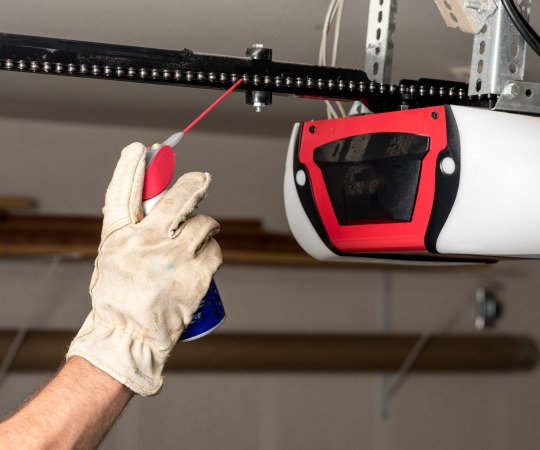
Can I use any type of lubricant on my garage door?
Imagine you’re standing in front of your garage door, ready to give it a little TLC. You know that lubrication is an essential part of maintenance, but you’re not sure what kind of lubricant to use.
There are several types of lubricants suitable for garage doors, including silicone-based sprays and lithium grease. However, using the wrong type can cause more harm than good. Avoid common mistakes like using WD-40 or motor oil, as these can attract dirt and debris and ultimately damage your door’s mechanisms.
When applying lubricant, be sure to focus on the hinges, rollers, tracks and springs – these areas need regular attention to keep your door running smoothly. With a little care and attention to detail in your maintenance routine, you’ll ensure that your garage door stays in top condition for years to come.
What should I do if I notice my garage door is not balanced?
If you notice that your garage door isn’t balanced, it’s important to address the issue right away. This can be done through DIY fixes or by contacting a professional for garage door repair.
A balanced garage door is crucial for safe and proper functioning, as an unbalanced door can cause damage to the opener and other components of the system. To determine if your door is unbalanced, disconnect the opener and manually lift the door halfway. If it stays in place, it’s balanced. If it falls or rises on its own, then there is an imbalance present.
By taking care of this issue promptly, you can ensure that your garage door remains in good working condition for years to come while also preventing more costly repairs down the line.
How do I know if my weatherstripping needs to be replaced?
Replacing your weatherstripping is an important aspect of maintaining your garage door’s performance. Over time, weatherstripping can become worn and ineffective, leading to air leaks and energy loss.
To determine if your weatherstripping needs replacing, inspect it regularly for signs of wear or damage. If you notice cracks or gaps in the material, it’s time for a replacement. Neglecting this maintenance task can result in costly repairs down the line and compromise the security of your garage.
By taking proactive steps to replace your weatherstripping as needed, you’ll ensure that your garage remains a safe and comfortable space for years to come.
How do I test the safety features of my garage door?
Are you aware that garage door accidents can cause serious injury or even death? That’s why it’s crucial to perform a garage door safety inspection regularly.
Start by checking the safety sensors, which are usually located on either side of the door near the floor. Troubleshoot them by waving an object in front of the sensor while closing the door. If the door doesn’t immediately reverse, this means there’s an issue with your safety sensors and they should be repaired or replaced as soon as possible.
Another important aspect of a garage door safety inspection is testing the automatic reversal system, which should engage when something obstructs its path during closing.
These technical details may seem overwhelming, but ensuring your garage door operates safely is essential for protecting yourself and those around you.
Conclusion
Congratulations on taking the time to learn about proactive protection for your garage door! Your efforts will pay off in the long run by preventing costly repairs and ensuring the safety of your loved ones.
By following these preventative maintenance tips, you can keep your garage door running smoothly for years to come. Think of your garage door as a symbol of security. It protects your valuables, vehicles, and most importantly, your family.
Don’t neglect it and risk compromising its function. Remember to lubricate moving parts regularly, check balance and alignment, inspect weatherstripping, test safety features, clean and inspect tracks, and schedule professional maintenance when necessary.
These simple steps can make all the difference in protecting what matters most. So take action now to ensure that your garage door remains a reliable shield against the outside world for years to come.
Related Source


